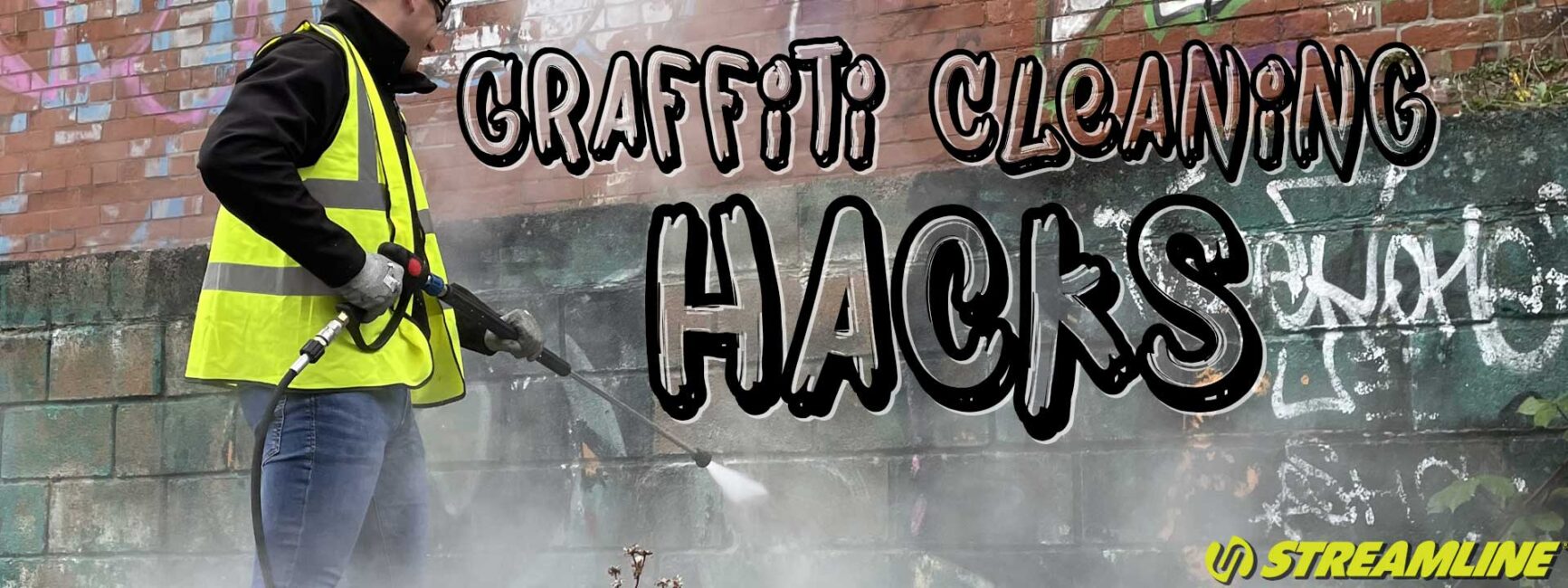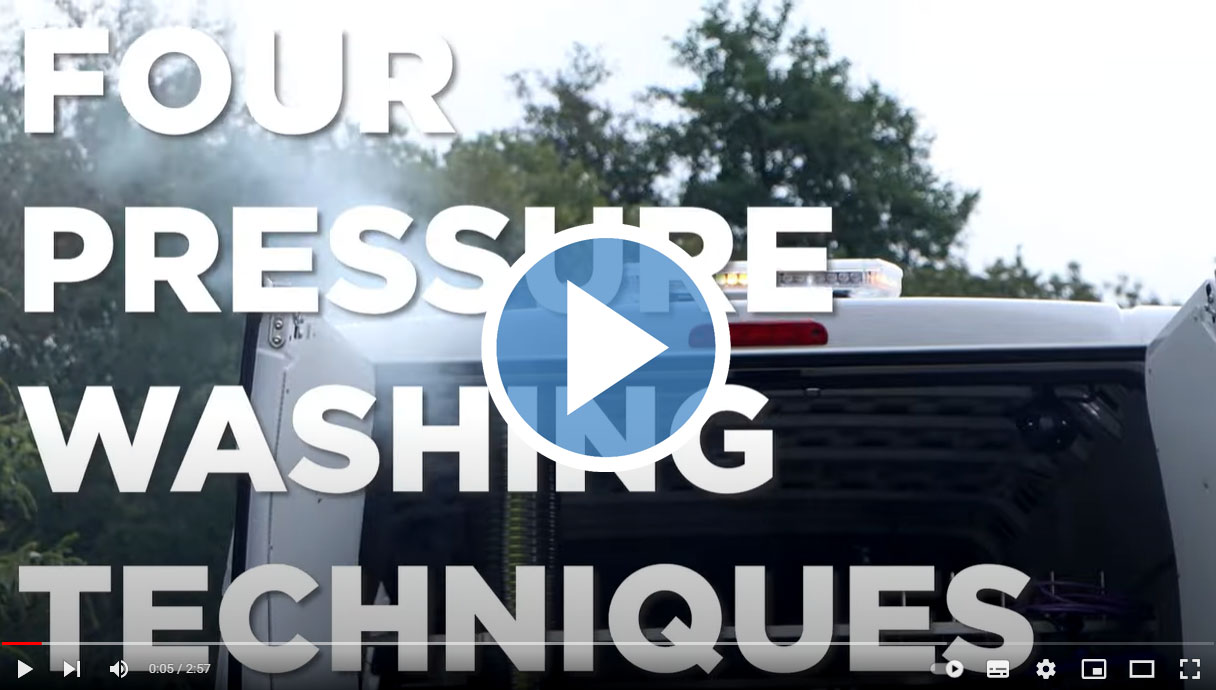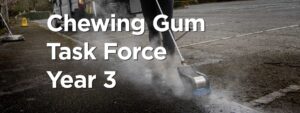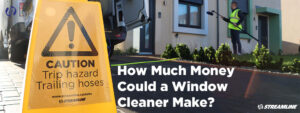Graffiti Cleaning Hacks: Proven Methods for a Graffiti-Free Environment
Graffiti Cleaning Ideas
Here, we’ll explore the many graffiti cleaning hacks, including; insider tips, quick fixes, high-tech tools, crowd-sourced solutions, and the latest innovations to help you clean away graffiti.
Insider Tips from Professional Graffiti Cleaners
Who better to learn from than the professionals who deal with graffiti day in and day out? In this section, we’ll share exclusive insider tips from seasoned graffiti cleaners. Discover the secrets of the trade, including specialised techniques, must-have tools, and tricks of the trade that can make your graffiti cleaning endeavours more effective and efficient.
- Early Intervention is Key
Professionals emphasise the importance of early intervention when dealing with graffiti. The sooner you address it, the easier it is to remove. Prompt action helps prevent the graffiti from setting and becoming more challenging to clean.
- Know Your Surfaces
Different surfaces require different approaches. Professionals stress the significance of understanding the material of the affected area. Whether it’s brick, concrete, metal, or wood, knowing the surface helps determine the right cleaning method and products to avoid unintended damage.
- Pressure Washing Techniques
Professionals swear by the effectiveness of pressure washing to clean graffiti, but they highlight the need for precision. Adjust the pressure according to the surface—higher pressure for durable materials and lower pressure for more delicate surfaces. Additionally, using a fan nozzle can distribute pressure evenly, ensuring a thorough clean.
- Choosing the Right Cleaning Agents
Not all graffiti is created equal, and neither are the cleaning solutions. Professionals recommend selecting cleaning agents based on the type of graffiti medium used. From paint to markers, each requires a specific approach to ensure successful removal without harming the surface.
- Temperature Matters
Professionals understand the impact of temperature on graffiti removal. Warm water and cleaning solutions are more effective in breaking down paint and markers. Using hot water pressure washers or applying warm water before cleaning can significantly enhance the efficiency of the process.
Watch the video: Graffiti Removal Techniques
- Test Before You Tackle
Before launching into a full-scale cleaning operation, professionals stress the importance of conducting a small test on an inconspicuous area. This ensures that the cleaning agents and techniques won’t cause damage or discoloration to the main surface.
- Protective Gear and Clothing
Graffiti cleaning can be a messy job, and professionals stress the importance of protective gear. Wearing appropriate clothing, including gloves and eye protection, is crucial to ensure personal safety while handling cleaning agents and equipment.
- Consistency in Cleaning Practices
Professionals emphasise the need for consistency in cleaning practices. Establishing a routine maintenance schedule can prevent the accumulation of graffiti and make the cleaning process more manageable over time.
- Environmental Considerations
Many professional graffiti cleaners are now adopting eco-friendly cleaning solutions. These not only effectively remove graffiti but also minimise environmental impact. Professionals suggest considering the ecological footprint of cleaning agents to contribute to sustainable practices.
- Community Collaboration
Graffiti cleaning is not a solitary task. Professionals often collaborate with local communities, authorities, and businesses. Establishing partnerships can lead to quicker response times, shared resources, and a more coordinated effort to keep public spaces free from graffiti.
By incorporating these insider tips into your graffiti cleaning endeavours, you can elevate your approach and achieve more effective and efficient results. Learning from professionals who navigate the nuances of graffiti removal daily is invaluable, providing you with a toolbox of expertise for maintaining a graffiti-free environment.
Quick Fixes for Immediate Graffiti Removal
Sometimes, immediate action is required to remove graffiti before it becomes a permanent fixture. We’ll provide quick fixes that you can employ on the spot, using readily available household items or easily obtainable cleaning solutions. Whether you’re a property owner, community member, or business manager, these quick fixes will empower you to tackle graffiti swiftly and decisively.
- Water and Soap: For water-soluble graffiti, such as markers or water-based paint, a quick fix involves using a mixture of water and mild soap. Wet the graffiti, scrub gently with a soft brush or cloth, and rinse. This method is suitable for surfaces that can withstand moisture.
- Acetone or Nail Polish Remover: Acetone or nail polish remover is effective for removing certain types of graffiti, especially from smooth surfaces like metal or glass. Apply a small amount on a cloth, gently rub the graffiti, and wipe away. Exercise caution, as acetone may damage certain materials.
- Baking Soda Paste: Create a paste by mixing baking soda with water. Apply the paste to the graffiti, let it sit for a few minutes, and then scrub with a brush or cloth. This method is gentle on surfaces and can be particularly effective for removing graffiti from porous materials.
- Citrus-based Cleaners: Citrus-based cleaners, often available in household cleaning products, can be effective against certain types of graffiti. Apply the cleaner, let it sit for a few minutes, and then scrub or wipe away the graffiti. Citrus-based cleaners are generally less harsh on surfaces.
- Pressure Washing with Cold Water: If you have access to a pressure washer, using cold water can be a quick and effective way to remove graffiti. Adjust the pressure to a level suitable for the surface, and direct the stream at the graffiti. This method is particularly useful for large, outdoor areas.
- Graffiti Remover Wipes: Pre-moistened graffiti remover wipes are available commercially and are designed specifically for quick graffiti removal. These wipes often contain cleaning agents that can break down graffiti without the need for additional tools or water.
- Eraser Sponges: Eraser sponges, also known as magic erasers, can be effective for removing graffiti from surfaces like walls. Moisten the sponge and gently rub over the graffiti. The abrasive nature of the eraser can help lift the graffiti without damaging the surface.
- Isopropyl Alcohol: Isopropyl alcohol, commonly known as rubbing alcohol, can be applied to graffiti using a cloth or sponge. This method is suitable for certain types of markers and paint. Ensure compatibility with the surface and test in a small, inconspicuous area before widespread use.
- Paint Over: In cases where immediate removal is not feasible or when dealing with porous surfaces, a quick fix involves painting over the graffiti with a matching or neutral colour. This method provides a temporary solution until a more thorough cleaning can be performed.
Note: Always test any cleaning method in a small, inconspicuous area first to ensure compatibility with the surface and to avoid unintended damage. Additionally, consider the environmental impact of the cleaning agents used.
Harnessing Technology: High-Tech Tools for Effortless Graffiti Cleaning
In the age of technological advancements, cleaning graffiti has gone beyond traditional methods. Explore the high-tech tools that professionals use to effortlessly remove graffiti. From advanced pressure washers to innovative cleaning solutions, we’ll guide you through the cutting-edge technologies that are revolutionising the graffiti cleaning landscape.
High-Pressure Hot Water Cleaners
High-pressure hot water cleaners, also known as steam cleaners, utilise the power of pressurised hot water to efficiently remove graffiti. These machines are equipped with advanced nozzles and heating elements, making them effective against various types of graffiti, especially on surfaces like concrete and metal.
Pneumatic Paint Strippers
Pneumatic paint strippers use compressed air to propel abrasive materials, such as baking soda or crushed walnut shells, against graffiti. These tools are effective for removing paint without causing damage to the underlying surface, making them suitable for delicate materials.
Laser Graffiti Removal Systems
Laser graffiti removal systems use laser technology to break down and remove graffiti without causing damage to the surface. These systems are precise and can be adjusted to target specific graffiti mediums. They are particularly effective for intricate or detailed graffiti removal.
Robotic Graffiti Removal Systems
Robotic graffiti removal systems employ automated machines equipped with specialised tools for graffiti removal. These robots can navigate surfaces with precision, making them ideal for large-scale graffiti removal projects on buildings, bridges, or other expansive structures.
Ultrasonic Cleaning Devices
Ultrasonic cleaning devices use high-frequency sound waves to create microscopic bubbles in a cleaning solution. As these bubbles implode, they produce a scrubbing effect, effectively removing graffiti from surfaces. Ultrasonic technology is gentle on materials and suitable for a variety of surfaces.
Smart Cleaning Applications
Smart cleaning applications leverage technology to streamline the graffiti removal process. These apps may include features such as image recognition to identify graffiti types, mapping tools for efficient route planning, and real-time reporting capabilities for collaborative community efforts.
Chemical Reaction Technology
Advanced chemical reaction technology involves the use of specialised cleaning agents that react with graffiti materials, breaking them down for easy removal. These chemicals are formulated to be effective while minimising environmental impact.
Nano Coatings for Surface Protection
Nano coatings, also known as nanotechnology-based coatings, can be applied to surfaces after graffiti removal. These coatings create a protective barrier that makes it more difficult for graffiti to adhere to the surface. They offer long-term protection against future graffiti incidents.
Automated Drones with Cleaning Attachments
Drones equipped with cleaning attachments are increasingly used for graffiti removal on large or hard-to-reach surfaces. These automated drones can navigate intricate patterns and structures to deliver targeted cleaning solutions.
Remote Monitoring and Surveillance Systems
Remote monitoring and surveillance systems incorporate cameras and sensors to detect and monitor graffiti-prone areas. These systems enable rapid response to new graffiti incidents, facilitating proactive cleaning measures.
These high-tech tools represent the cutting edge of graffiti removal technology, providing efficient and effective solutions for maintaining clean and graffiti-free environments. Incorporating these tools into a comprehensive graffiti removal strategy can enhance the overall effectiveness of urban maintenance efforts.
Crowd-Sourced Solutions: Learning from the Online Community
The internet is a treasure trove of shared experiences and collective wisdom. Discover tips, tricks, and DIY methods that individuals and communities have successfully used to combat graffiti. The power of collective knowledge is at your fingertips, just search the internet and view some of the many submitted solutions.
Staying Informed: Keeping Up with the Latest Graffiti Cleaning Innovations
Innovation is constant, and the world of graffiti cleaning is no exception. Stay ahead of the game by learning about the latest innovations in graffiti cleaning. From eco-friendly cleaning solutions to smart applications that aid in monitoring and swift removal, we’ll highlight the advancements that are shaping the future of graffiti cleaning.
- Industry Publications and Journals
Subscribe to industry publications and journals that focus on cleaning, maintenance, and urban development. These sources often feature articles and reviews on the latest innovations in graffiti removal, including new cleaning solutions, tools, and techniques.
- Professional Associations and Conferences
Join professional associations related to cleaning and maintenance, as they often organise conferences and events. Attend conferences to stay updated on the latest trends, products, and technologies in graffiti cleaning. Networking with professionals in the field can provide valuable insights.
- Online Webinars and Workshops
Participate in online webinars and workshops hosted by industry experts and organisations. These virtual events often cover emerging technologies and best practices in graffiti removal. They provide a convenient way to stay informed without the need for travel.
- Manufacturer Updates and Newsletters
Subscribe to newsletters and updates from manufacturers of cleaning products and equipment. Manufacturers frequently announce new products, advancements, and application techniques that can enhance graffiti cleaning processes.
- Government and Municipal Resources
Check with local government and municipal resources that focus on urban maintenance and cleanliness. These entities often share information on the latest initiatives, technologies, and regulations related to graffiti removal in public spaces.
- Online Communities and Forums
Engage with online communities and forums dedicated to graffiti removal and urban maintenance. Active members often share real-world experiences with new products and techniques, providing valuable insights into what works effectively in various situations.
- Follow Industry Leaders on Social Media
Stay connected with industry leaders, experts, and organisations on social media platforms. Many professionals share updates, articles, and success stories related to graffiti removal. Following these accounts can provide a continuous stream of relevant information.
By adopting a multifaceted approach that includes traditional publications, online resources, industry events, and networking with professionals, you can stay well-informed about the latest innovations in graffiti cleaning. Embracing a continuous learning mindset ensures that you remain at the forefront of industry advancements and contribute to the ongoing improvement of graffiti removal practices.
Graffiti Removal FAQ’s:
Are there any legal considerations or regulations to be aware of when removing graffiti, particularly in public spaces or historical areas?
Legal considerations and regulations regarding graffiti removal can vary depending on the jurisdiction and the nature of the property. It’s important for individuals or organisations engaging in graffiti removal to familiarise themselves with local laws and regulations pertaining to property maintenance, vandalism, and environmental impact. Some areas may require permits or adherence to specific guidelines when removing graffiti, especially in historical districts or on protected surfaces. Additionally, there might be considerations regarding the disposal of cleaning agents or waste generated during the removal process.
How can individuals or communities effectively coordinate with local authorities or businesses to address recurring graffiti issues in their area?
Effective coordination with local authorities, businesses, and community members is crucial for addressing recurring graffiti issues. Establishing partnerships and communication channels can lead to quicker response times, shared resources, and a more coordinated effort to keep public spaces free from graffiti. Community members can report graffiti incidents promptly to relevant authorities or business owners, who can then take appropriate action for removal. Collaborative initiatives, such as neighborhood clean-up events or graffiti prevention programs, can also foster a sense of ownership and pride in maintaining clean environments.
Are there any long-term strategies or preventive measures recommended to deter graffiti vandalism beyond just immediate removal methods?
Beyond immediate removal methods, implementing long-term strategies and preventive measures can help deter graffiti vandalism. These strategies may include enhancing surveillance and security measures in graffiti-prone areas, such as installing cameras or improving lighting to discourage vandalism. Community engagement and public education campaigns can raise awareness about the costs and consequences of graffiti vandalism, fostering a sense of responsibility and respect for public spaces. Additionally, implementing graffiti-resistant coatings or materials on surfaces susceptible to vandalism can make it more difficult for graffiti to adhere and facilitate easier removal. Regular maintenance and upkeep of public spaces, coupled with community involvement in monitoring and reporting graffiti incidents, can contribute to creating environments less susceptible to graffiti vandalism over time.







